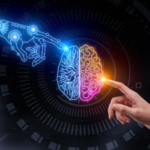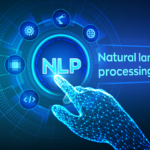The Future of Handheld Gaming Could Dominate This Holiday Season
Last week, Qualcomm unveiled three new gaming platforms tailored for handheld gaming enthusiasts. These platforms are set to challenge traditional game consoles, prioritizing portability while still providing a richer gaming experience compared to smartphones and greater mobility compared to gaming PCs or consoles.
The emergence of these gaming platforms indicates a shift towards more serious handheld gaming. The revenues from handheld games have surpassed those from consoles and PCs, primarily due to the convenience of having a smartphone always at hand. However, using a smartphone for gaming comes with limitations like battery drain, interruptions from notifications, and awkward controls.
The advent of head-mounted displays has also created challenges for smartphone gaming, as they hinder proper finger placement on the screen. Specialized handheld gaming devices aim to address these issues and provide a focused gaming experience, similar to how game consoles do in comparison to PCs.
Qualcomm’s Snapdragon G Series portfolio comprises three tiers:
- Snapdragon G1: Geared towards cloud streaming, allowing users to stream video and games via services like GeForce Now.
- Snapdragon G2: Offers more performance for local gaming and streaming, priced in the $300-$400 range.
- Snapdragon G3: Aimed at performance gamers, delivering a console-like experience with higher performance and likely exceeding $400 in price.
Qualcomm showcased a prototype based on the Snapdragon G3x Gen 2 platform, designed for enthusiasts. This premium device features active cooling fans, delivers desktop-level gaming features, and supports Ray Tracing for more lifelike graphics.
These handheld gaming devices come with built-in controllers and high-performance GPUs that aren’t hindered by background apps or phone operations. The experience is akin to using a gaming console, with simplified menus for quick content access. Moreover, the integration of head-mounted displays sets the stage for a shift away from traditional screen-based gaming.
The devices also open up the possibility of immersive multiplayer gaming experiences on-the-go. Cross-platform games could find better solutions for mobile and road-based multiplayer games, such as gaming sessions on buses, planes, or ships.
These new handheld gaming systems are expected to be released before the holiday season, making them potential breakout hits. Their affordability and innovation promise a distinct portable gaming experience, and they’re among the first to fully integrate head-mounted displays.
In a similar vein, the introduction of generative AI could bring engaging and even AI-driven non-player characters (NPCs) to these gaming platforms, further enhancing the gaming experience.
On another note, the HyperX QuadCast S microphone is highlighted as the tech product of the week. This microphone offers high sound quality, adjustable settings, a mute button, and even a headset socket for easy integration, all at a relatively affordable price.


































